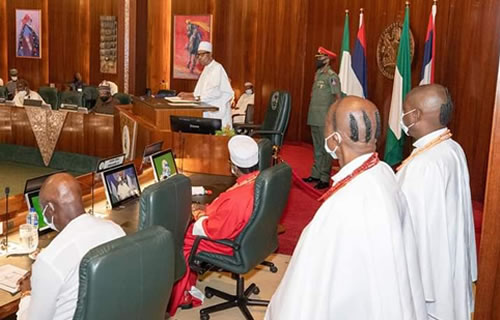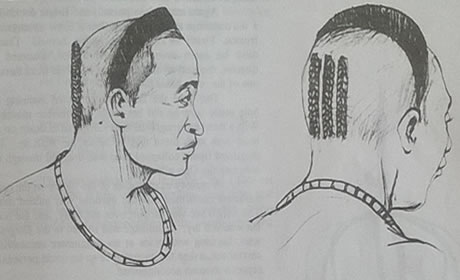By Ekhaguosa Aisien {Last Update May 7, 2022}
The evidence is in the famous FESTAC MASK, the carved ivory hip pendant of the face of a noble persiflage in the Benin world of Oba Esigíe.
The UGUAKPATA chiefly hair-do of this well-known artifact consists of a row of the repetitively carved head of a European Roman Catholic Bishop, eleven replications of the head all told .The long hair and the flowing heard identity the head as that of a European. The Skull-Cap, the zucchetto, on his head identifies him as a Prince of the Church that is a Bishop, an Archbishop, a Cardinal or the pope himself.
The skull-cap worn only by priests not below the rank of a Bishop testifies that the wearer will be steadfast and faithful to Christianity at all time in all circumstances, unflinching in the face of any threat to the religion even unto death. The wearer of the zucchetto is a walking martyr of the faith. Other might run away even priests in the face of cataclysmic religious danger but the skull-cap wearer serenely stays his ground. Having been completely assimilated in and identified with the faith he cannot run away for to run away from himself.

Some Benin Chiefs with Ogbon hair do
The use of the skull-cap was said to have arisen in the early Monasteries of the Christian Church when Novitiates. on admission into the Order of the Priesthood were obliged to shave bare a rounded portion of their scalps usually over the vertex of the scalp or over the occiput and to keep this feature permanently as a distinguishing mark of their priesthood Whenever in life the priest attained the giddy heights of a Bishop he adopted the zucchetto article of adornment and of rank. The zucchetto was henceforth used to cover up the round naked portion of his pate. But when celebrating the Feast of the Holy Communion at the altar the Bishop sheds even this modest head covering this little article of vanity in the presence of the awesomeness of the sacrificial ritual he is taking part in.
The repetitively carved head which makes up the Uguakpata hair-do of the Festac Mask was the carver’s representation of the head of the Roman Catholic Bishop of the Benin City of Oba Esigie.
If it was argued that the Church in the Benin City of Oba Esigie could not have been important enough to accommodate the office of a Bishop then the least that could be suggested would be that the Portuguese Roman Catholic Bishop of the Bishopric of Nigerian off-shore island of SAO TOME paid a pastoral visit to the Benin Church and the artist adopted the august visitor as his subject for the UGUAKPATA adornment Of representation of the face of a Benin royal personage which he carving in ivory

Ogbon hair do
The artist who created this work of art was very probably an Omada a Sword-Bearer in the royal palace, rather than an ivory carver in Igbesanmwan Street. It could only have been a middle-aged Omada, living the monistic life of Palace service, with all his physical needs met and with no worldly responsibilities as for a wife and children who could have put in so much love, time, attention artistic clarity - and beauty, into a length of elephant tusk
The Ivory Mask has been identified as depicting the face of IDIA the Queen Mother of Oba Esigie. The Queen Mother was the only female in the Kingdom who as of right would sport an Uguakpaia chiefly hair-do. This is because in status the Iyoba is a member of the prestigious Eghaevbo- Nore group of chiefs whose leader is the Iyase. She occupies the fifth position in the hierarchy of the group after the Osuma and before the Esama.